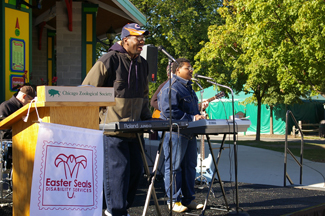Easter Seals Vision 2010
by Beth Finke
I’m writing today from the Easter Seals National Convention in Washington, D.C. I would have posted something yesterday, but I was too busy!
Yesterday started with a convention breakfast at the Capitol Hilton. Easter Seals President and Chief Executive Officer James E. Williams, Jr. spoke at the breakfast. The day ended with a special event for the Presidents’ Council at the National Museum of Women in the Arts. The speaker at this event was… me!
First, about the morning speech; Williams spoke about Vision 2010 – Easter Seals’ plan to extend its reach to 5 million people by the end of this decade.
Williams described how Vision 2010 will enhance direct service and advocacy in four areas of great need: Children’s Services, Older Adult Services, Veterans Services and Autism Services. Â
When it comes to autism, Vision 2010 will:Â
- strengthen Easter Seals programs for individuals with autism
- ensure that children receive early diagnosis and treatment
- implement new models of “best practices” for care and support across the lifespan
- develop strategic partnerships to advance awareness, public policy and funding initiatives
- create networks offering support and information to families, caregivers and professionalsÂ
My speech last night mentioned Vision 2010, too. I talked about how the computer training I’ve received at Easter Seals helped me gain independence, and how support for Vision 2010 will make me just one of five million that Easter Seals has helped by the end of this decade.
It’s all very exhilarating –Â now, I can’t wait to hear what happens tomorrow at Capitol Hill Day!







